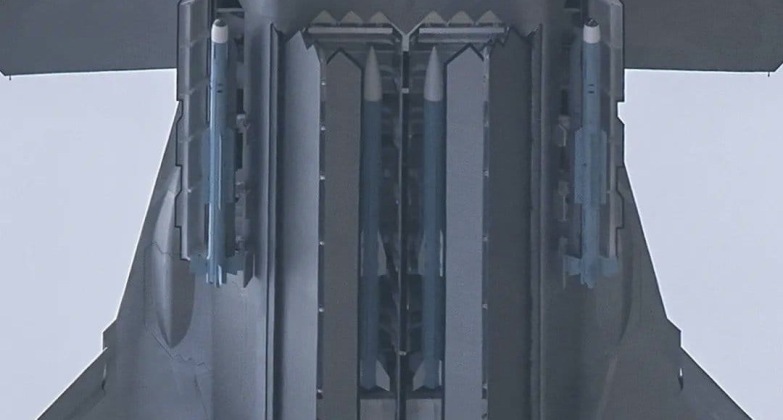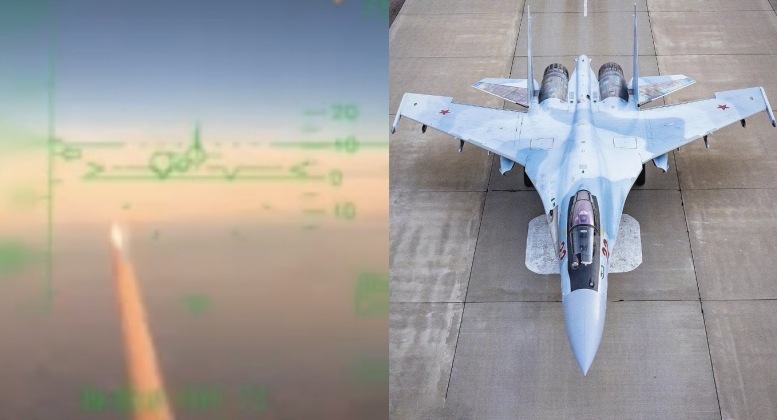News
Su-35 vs. JF-17 Block III: Iran and Pakistan’s New Fighters Are Total Opposites – Which is Better?
The air forces of neighbouring Pakistan and Iran in 2023-24 have both moved to induct new generations of fighter aircraft into service, with the former acquiring the JF-17 Block III in parallel to smaller numbers of the larger J-10C, both of which were acquired from China to fulfil complementary roles, while the latter has purchased Su-35 fighters from Russia. In both cases these new aircraft are expected to replace ageing Vietnam War or pre Vietnam War era third generation fighters, namely Mirage III, Mirage 5 and J-7 fighters in Pakistan’s case and F-4 and F-5 fighters in Iran’s case, with both fleets having seen their service lives extended by several decades and benefitted from degrees of modernisation. For both air forces the acquisition of new fighters is a revolutionary development, with the JF-17 Block III and J-10C bringing the Pakistani fleet into the ‘4+ generation’ with some of the most sophisticated avionics and air launchd weapons anywhere in the world. For Iran, which lacks fighters with avionics less than 40 years old, the Su-35 will represent an even greater technological leap despite being less advanced than the Chinese jets its neighbour is acquiring.

Acquiring the Su-35 and JF-17 Block III, the Iranian and Pakistani fleets have taken totally opposite approaches to acquisitions. The Su-35 is approximately three times the size of the JF-17, representing one of the largest fighters in the world while the other is one of the very smallest. The Su-35’s radar size, range and weapons carrying capacity are all well over double those of the JF-17, and the two are at opposite ends of the spectrum in terms of flight performance with the Su-35’s operational altitude, climb rate and manoeuvrability being among the highest in the world. Nevertheless, for countries with very large fleets in need for replacement, the JF-17 Block III may well be a far more suitable fighter. Not only is the aircraft significantly cheaper, but much more importantly its lifetime operational costs and maintenance requirements are a small fraction of those of the very large Su-35. As a result it will be highly affordable to give a large pool of pilots a high number of annual flying hours, and to acquire the aircraft on a very large scale to re-equip multiple squadrons across the fleet. By contrast, transitioning to the Su-35 if done on a large scale will likely require Iran to significantly reduce the number of fighters in service due to the large discrepancy in operational costs between the new aircraft and those it currently has in service.

Although being much smaller, the JF-17 Block III has a number of critical performance advantages over the Su-35. The fighter’s a KLJ-7A active electronically scanned array radar, next generation PL-15 and PL-10 air to air missiles, and new generations of helmet mounted sights and other key avionics, all of which are far ahead of their equivalents used by the Su-35 in terms of sophistication. The Su-35’s use of a much larger radar, and two secondary wing mounted radars for support, is thus partly compensated for by the JF-17 Block III’s more advanced sensors, greater ability to network with other assets, and the likely greater electronic warfare capabilities and countermeasures of its sensor suite. The JF-17’s missiles, which were developed for China’s J-20 fifth generation fighter, have overwhelming advantages in performance over their Russian counterparts carried by the Su-35. The PL-15 has over double the range of the Russian R-77-1 carried by the Su-35 while also using a more advanced AESA adar for guidance, while the short range PL-10 can engage targets at far more extreme angles than the Su-35’s R-73 and R-74.

The Su-35 and JF-17 Block III are in many respects opposites, with the former being a world leading airframe design but suffering from its less than cutting edge avionics and weaponry, while the latter was designed to prioritise low operational costs and maintenance, sacrificing flight performance in the process, but has compensated heavily with the sophistication of its sensors, avionics and armaments. Iran’s choice of acquisitions partly reflects the political difficulties the country has faced acquiring new armaments, as well as its reported ability to pay for arms imports from Russia through barter by exporting its own advanced assets such as drones. The fact that the fighter has already been intensively combat tested, not only intercepting Israeli and Turkish fighters and American drones over Syria, but also extensively engaging in air to air combat over Ukraine with more kills than any other post-Cold War fighter class, is a further benefit as Iran faces particularly imminent potential threats to its security. With Iran maintaining widespread interests across the Middle East, including close security partnerships with the Lebanese militia Hezbollah, Syria and other actors, the Su-35 as by far the longest ranged fighter in the region will provide the potential for out of area operations to provide air support well beyond Iranian territory. This will complement the drone and special forces operations the country already conducts across the region. The fighter was also designed to operate behind the cover of a large multi layered surface to air missile network – something both Russia and Iran deploy.

For Pakistan, ground based air defences have only begun to be built up very recently with acquisitions of Chinese HQ-16 and HQ-9 systems – the latter delivered only in 2021 and representing the country’s first long range surface to air missile asset. Where Iran’s drone capabilities are among the world’s most formidable, with an industry considered third only to China and the United States in the range of assets it produces and their demonstrated performances, Pakistan’s drone fleet is relatively limited meaning the air force relies far more on fighters for roles such as provision of air support to ground units. The JF-17 Block III will allow the country to revolutionise the capabilities of multiple units across its large fighter fleet far more effectively than acquisition of much smaller numbers of costly heavyweight fighters such as Su-35s could, with lifetime operational costs estimated at under one third and possibly under one fifth those of the Su-35 meaning three to five times as many JF-17 Block III units can be fielded for each Su-35 unit. Acquiring what is likely a much more cost effective and sophisticated fighter means the discrepancy between the two neighbours’ fleets favouring Pakistan is expected to only grow over the coming decade.












